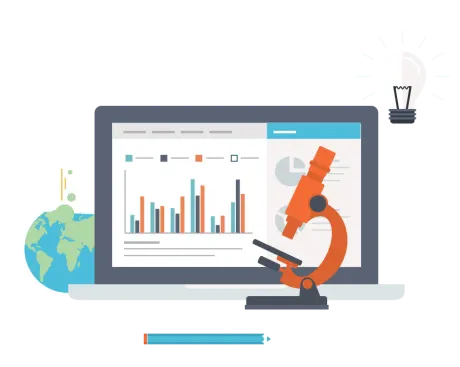
The term research scares some people. It evokes images of all-nighters in the library in college and annotated bibliographies. You can’t really blame those who fear it. Here’s the thing, there’s one kind of research we should all welcome, especially nonprofit professionals…non-profit prospect research.
Nonprofits do all they can to maximize funding, from curating an excellent web presence for online fundraising to carefully writing and choosing the materials to go into a direct mail campaign, organizations are always looking for an added edge.
Nonprofits, meet prospect research. Prospect research takes the guesswork out of fundraising. It puts valuable information in the hands of the fundraisers who need it. A lawyer would not go into court without case files, a doctor would not go into the operating room without reviewing a patient’s medical records, and a fundraiser should not go into an ask without proper knowledge of the prospect.
Here are four reasons to get going and begin prospect research today!
#1: Target Major Gift Prospects
They say a penny saved is a penny earned. Well, the same goes for time. And in the case of this discussion, development staff’s time. During fundraising campaigns, nonprofits need to optimize staff time.
Time is a limited and diminishing resource, so fundraisers need to focus their efforts on the prospects most likely to convert to donors, and, even more specifically, major donors.
To efficiently target those major gift prospects, nonprofits perform prospect screenings. The screenings will look at past charitable donations and giving capacities to help isolate those high-quality donors.
The extra information provided by prospect research will also be a huge help in determining the ideal amount to ask for.
#2: Discover Major Gift Prospects Among Your Annual Fund Donors

Many of your major gift prospects are hiding in your list of annual fund donors. Prospect screenings will hunt through those donors and highlight the qualified major gift prospects.
Annual Fund donors are clearly already established as loyal and committed to your cause. With prospect research, you can root out who of those loyal donors can give a major gift.
For instance, through the research, you could discover that one of your annual fund donors has given a large donation to another nonprofit. That tells you that you have a dedicated donor with major giving capabilities in your midst. Your staff can then adjust their ask policies with said supporter accordingly.
#3: Find New Prospects
Nonprofit fundraising is a careful balance of acquisition and retention. Although organizations should aim for high retention rates, donor acquisition is still a crucial factor in the growing success of any nonprofit.
Prospect research can help any organization find new prospects. Whether highlighting significant relationships current donors have with prospects or culling through the supporters of similar organizations, the research will do much of the heavy lifting when it comes to compiling a list of new prospects.
#4: Update Your Donor Data

The better your donor data is, the better your fundraising efforts are. It is absolutely vital that organizations keep up-to-date and accurate donor data in their databases.
This is easier said than done, but luckily non-profit prospect research can help. Screenings will often fill in gaps in donor information.
Inaccurate donor data leads to missed opportunities. For instance, knowing the employer of a donor could be the difference between receiving a matching gift and never even thinking to ask for one in the first place.
Nonprofits should know as much as they can about prospects, and that starts with basic information. The four reasons listed above are just four of the many. Don’t let your organization fall behind its fundraising goals because of a fixable problem. Learn all you can, while you can.
Guest Post provided by Sarah Tedesco of Donor Search. Sarah is the Executive Vice President at DonorSearch, a non-profit prospect research and wealth screening company that focuses on proven philanthropy. Sarah is responsible for managing the production and customer support department concerning client contract fulfillment, increasing client retention, and customer satisfaction. She collaborates with other team members on a variety of issues including sales, marketing, and product development ideas.



